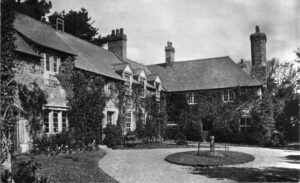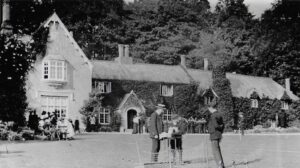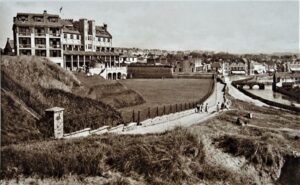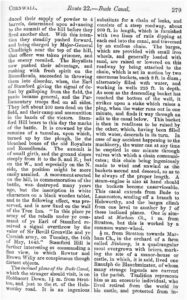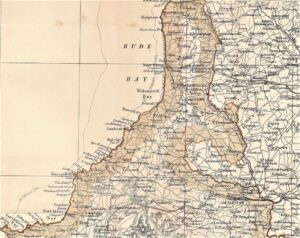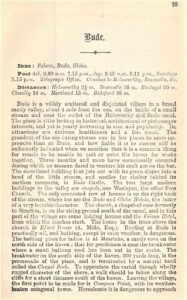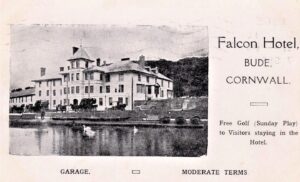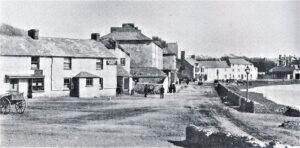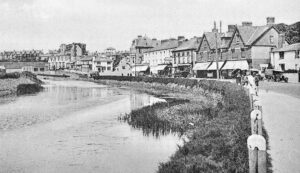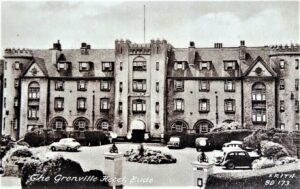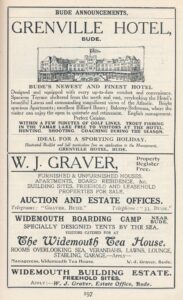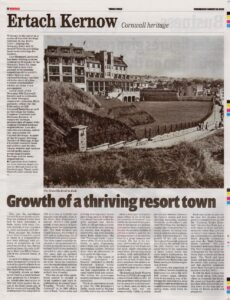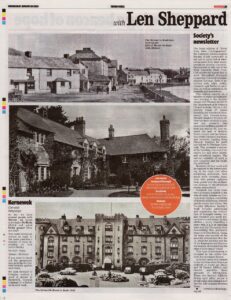Bude - Growth of a thriving Cornish resort town
This year the prestigious Gorsedh Kernow Esedhvos Festival was planned to have been held in early September at Bude. Along with many Cornish festivals it was cancelled or rather postponed until 2021. Bude amongst the farthest towns from Cornwall’s capital at Truro is a comparatively new town although with evidence of occupation in that area from the Iron Age. During medieval times, the only building at Bude was Efford Manor, seat of the Arundell family of Trerice.
As part of looking at communities throughout Cornwall we look at the growth of Bude from one medieval manor house to a thriving north Cornwall holiday resort.
Originally known as Budehaven there is a small harbour area, protected by a breakwater, rebuilt after destruction in 1838 this helps protect the access to the Bude Canal, one of the few canals in Cornwall. The existing canal was completed in 1826 at a cost of £128,000 and runs for over 30 miles close to the River Neet. Considered a marvel, Murry’s 1859 guide spends a huge amount of space talking about the ingenious design. The Bude Harbour and Canal Company was formed in 1819 and an authorising Act of Parliament was quickly passed. The Bude Canal originally developed to bring sea sand rich in lime to spread on poor agricultural land but use gradually extended to carry other goods. The canal had six inclined planes and raised the level of the canal 350 feet over the first six miles. Along the canal here was also shipbuilding and ship repair works and other businesses related to the canal such as Box’s Iron Foundry.
This was an age when guidebooks started to abound in larger numbers and were republished on an annual basis. Tregellas “Tourist Guide to Cornwall” in its 1880 edition says of Bude, “a favourite and growing watering-place” It also gave a huge amount of information about Cornwall within its quite compact size. Blacks Guide of 1885 provides a lovely map of the Bude area, showing the railway line stopping at Holsworthy, but gives nothing about Bude whatsoever. The 1885 “Thorough Guide”, a precursor of the Ward & Lock Red Books, is quite disparaging about Bude and certainly not encouraging visitors. Perhaps there were no advertisers in their
“A Guide to The Coasts of Cornwall Descriptive of Scenery” published in 1859 by Mackenzie Walcott writes highly about Budehaven, noting that construction of the canal raised Bude into notice. Also noting the picturesque scenery and areas of interest to naturalists.
This is an opportunity to look at what the 1866 Bradshaw’s Guide, much used by Michael Portillo, had to say about Bude. It must be noted that Newquay didn’t feature at all.
Bude–a small port and picturesque village in the north-eastern extremity of Cornwall – has, within the last half-dozen years, risen to the dignity of a fashionable marine resort, to which distinction the excellent facilities it affords to bathers, and the picturesque scenery of its environs, have in a great measure contributed. The bed of the harbour, which is dry at low water, is composed of a fine bright yellow sand, chiefly consisting of small shells. The sea view is of a striking, bold, and sublime description – the rocks rising on every side to lofty broken elevations; and those who desire a sequestered and romantic retreat will find in Bude the very object of their wish.
The London & South Western Railway [LSWR] had completed a line to Holsworthy in 1871. At this point there were proposals but no plans for a railway service to Bude, seen as fairly insignificant and not yet commercially viable. A coach service ran between Holsworthy railway station and Bude carrying increasing numbers of tourists. As Bradshaw’s indicated the village was starting to expand, due to the growing Victorian interest in taking holidays at coastal watering-places, as they were then known. The growth of the rail network throughout Cornwall gathered pace during the second half of the 19th century and was a major factor in the expansion of many coastal towns into mass tourist destinations. By 1898 a rail link had been completed between Holsworthy and Bude, leading to further expansion of Bude into a sizeable town.
Of course, the expansion of the railway besides benefiting Bude came at a cost to the early 19th century canal. Alternatives to sea sand by way of fertilising the land had also been found and with the reduction in coastal trade by way of wooden sailing ships canal trade declined.
Bude was on the up and over the next few decades would grow to a sizeable town, in 1906 the “Cornwall Trades Directory” showed that Bude had a wide range of shops and businesses far wider than you find on today’s high streets. Boarding establishments and hotels listed alongside restaurants and even the “Bude Sanitary Steam Laundry”. The 1918 Homeland Reference Book for The West Country had an advertisement for the Grenville Hotel, Bude’s newest and finest hotel. The Ward and Lock Guide 1926 had moved on from its earlier 19th century roots and had positive comments about Bude through to its own demise in the late 1970’s.
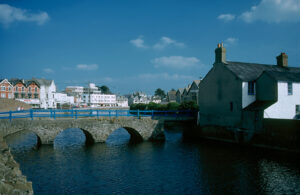
In 1966 the Bude railway line was closed along with many others in Cornwall, made redundant by motor vehicles, just as it had in turn taken over from the Bude Canal in the late 19th century. But firstly, the canal and then the railway had done their jobs in truly putting Bude on the map and assuring its future growth
